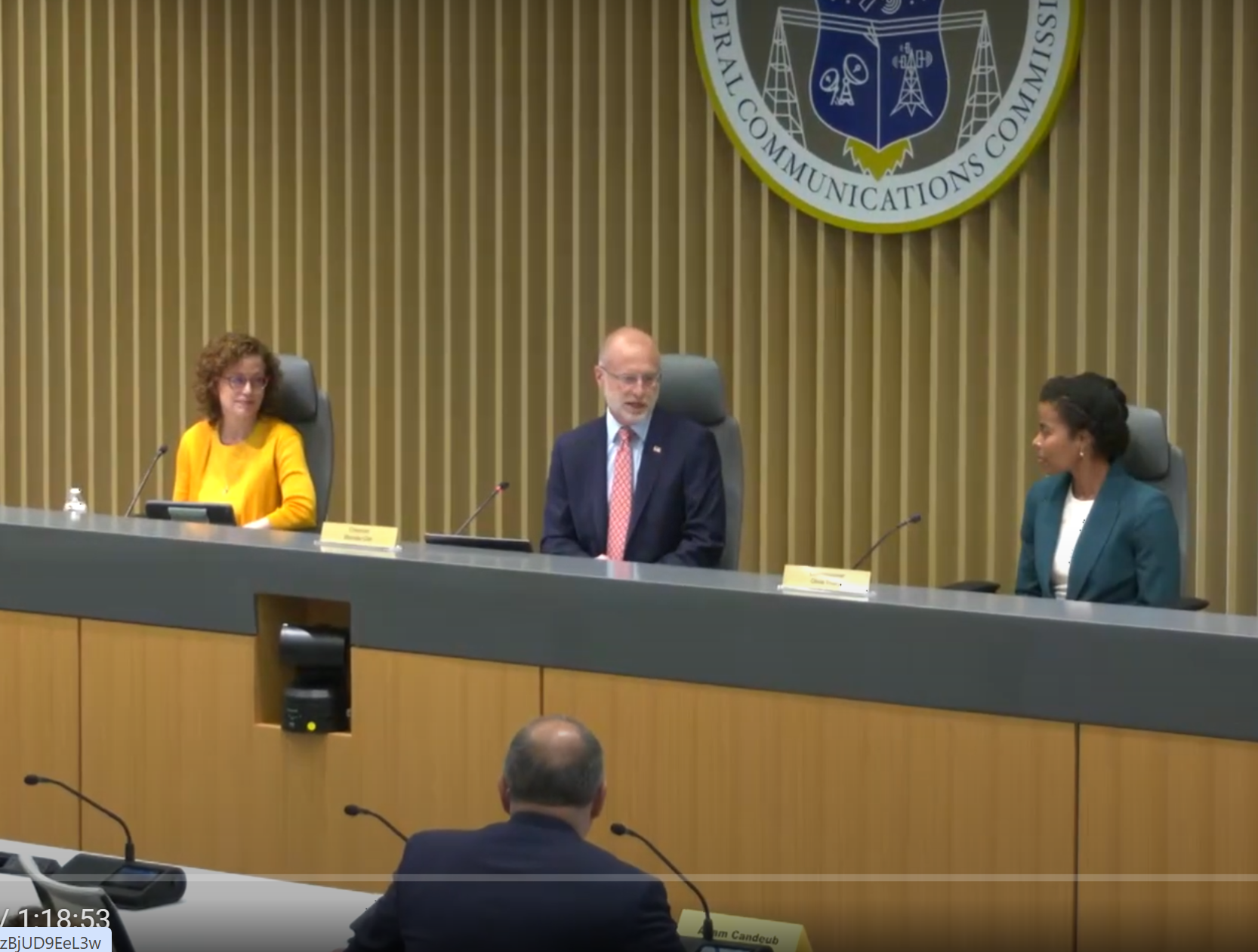This week the CTIA ("The Wireless Association") and CEA (Consumer Electronics Association) sent a letter [PDF] to the FCC Chairman and Commissioners, asking the commission to observe federal regulations requiring an assessment every 10 years of how TV spectrum is being used.
The associations noted that Section 336(g) of the Communications Act requires an assessment within 10 years after the date the FCC issues additional licenses for advanced television services of, among other things, "the extent to which the Commission has been or will be able to reduce the amount of spectrum assigned to licensees."
CTIA and CEA noted that the initial licenses for advanced television services were issued in February 1999 and "To our knowledge, the Commission has never conducted a detailed evaluation of advanced television services, nor has it made an assessment of alternative uses and the ability of the Commission to reduce the amount of spectrum assigned to broadcast television licensees."
CTIA and CEA argue that this spectrum is "uniquely suited for mobile broadband applications, devices and services...." and urges the FCC "to take immediate action to initiate the Congressionally-mandated evaluation of broadcast television spectrum usage.
While the letter stops short of asking the FCC reallocate free off-air TV spectrum to wireless carriers for paid broadband access, this evaluation could be used to justify scenarios such as eliminating free off-air TV completely or combining a standard-definition version of multiple stations' programming on a few channels shared by multiple broadcasters to free up spectrum for the wireless carriers. This would also make it impossible for broadcasters to offer free mobile DTV programming which, of course, would compete with the mobile DTV subscription plans from wireless service providers.
In the CTIA Reply Comments on Spectrum For Broadband [PDF], the Wireless Association not only looks for spectrum from broadcasters, but from the government, fixed wireless and satellite services as well.
CTIA stretches the facts with statements like "the true spectrum usage of one DTV broadcast station can be effectively as large as 18 MHz in a market." CTIA justifies this statement based on the requirement for "between 6 and 12 MHz of 'buffer' on either side of the channel to accommodate the interfering effect of the strong broadcast signal..."
A look at one of the major TV markets shows this is not the case.
In Los Angeles, full power DTV stations occupy channels 34, 35 and 36. Channel 37 is reserved for medical devices and radio astronomy. Other full power stations occupy channels 38 and 39. After skipping channel 40, which is used by a full power DTV station in San Diego, the Los Angeles full power channels continue with channels 41, 42 and 43.
This contradicts CTIA's statement that each full power TV station takes up 12-18 MHz of spectrum. As far as I can tell, out of 60 MHz of TV broadcast spectrum in southern California, only 6 MHz of spectrum is "unused" and that's because channel 37 can't be used for broadcasting.
The CTIA says broadcasters don't need the full 6 MHz for HDTV because they are offering multicast and future mobile DTV services. CTIA ignores the fact that most multicast channels are free and in some cases, especially in larger markets, provide free off-air programming to specific ethnic communities. Broadcasters' mobile DTV plans include free channels as well.
I fear that if CTIA and other opponents of free TV (that is, television supported by advertisers or, in the case of PBS, by viewers and corporate sponsors) get their way, if any free TV is left it will be a limited assortment of down-sized SD programming.
Of course, there will be alternatives.
Want mobile DTV? Pay your wireless company for a subscription. Want multicast programs like "PBS Kids", "Create" or "World"? Buy a cable subscription. Want HDTV? Buy a cable or satellite subscription. Want wireless HDTV on your laptop? Buy a wireless data plan and download the shows, but don't expect unlimited bandwidth.
The professional video industry's #1 source for news, trends and product and tech information. Sign up below.

Doug Lung is one of America's foremost authorities on broadcast RF technology. As vice president of Broadcast Technology for NBCUniversal Local, H. Douglas Lung leads NBC and Telemundo-owned stations’ RF and transmission affairs, including microwave, radars, satellite uplinks, and FCC technical filings. Beginning his career in 1976 at KSCI in Los Angeles, Lung has nearly 50 years of experience in broadcast television engineering. Beginning in 1985, he led the engineering department for what was to become the Telemundo network and station group, assisting in the design, construction and installation of the company’s broadcast and cable facilities. Other projects include work on the launch of Hawaii’s first UHF TV station, the rollout and testing of the ATSC mobile-handheld standard, and software development related to the incentive auction TV spectrum repack. A longtime columnist for TV Technology, Doug is also a regular contributor to IEEE Broadcast Technology. He is the recipient of the 2023 NAB Television Engineering Award. He also received a Tech Leadership Award from TV Tech publisher Future plc in 2021 and is a member of the IEEE Broadcast Technology Society and the Society of Broadcast Engineers.
